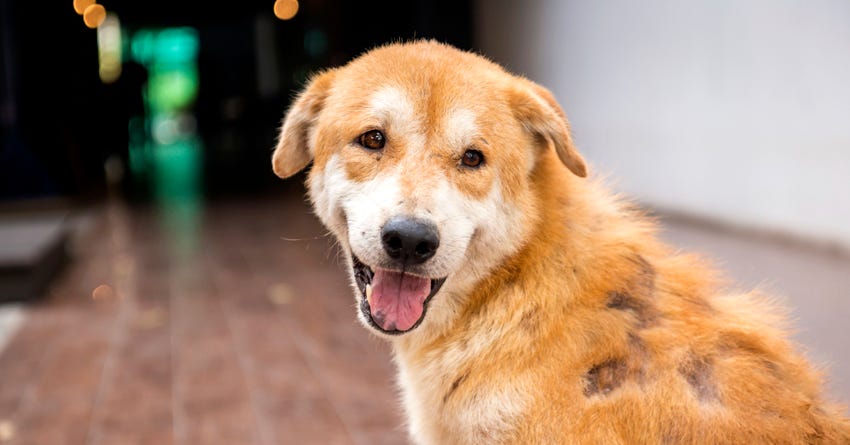There are some dogs that are naturally hairless. But for most breeds, going bare or bald signals a larger problem at work. When dogs experience hair loss, known as alopecia, it could be a symptom of a medical condition or it could be hereditary. As a pet parent, brush up on the basics of hair loss in dogs, including the different types, causes and treatment options.
Types of Dog Hair Loss
Hair loss can often be diagnosed according to different patterns. Most causes come with their own pattern, making it easier to determine the best form of treatment. A common example would be flea infestation in a particular area that’s easy for a dog to chew at, such as the base of the tail or along the inside of the legs. The most common patterns of hair loss in dogs include:- All-over thinning of hair
- Thinning over the back and sides of the body
- Thinning over the ears
- Thinning along the neck
- Thinning under the belly
- Complete hair loss along the sides
- Circular bald patches
- Baldness on the abdomen
- Patches of baldness on the legs
- Balding over the scrotum at the back of the hind legs
Causes of Hair Loss in Dogs
A list of common causes of hair loss in dogs include:- Allergic or contact dermatitis: An allergic reaction can cause cause skin irritation and hair loss. Common allergies include medication, pollen, dust, chemicals, fragrances and various plants.
- Alopecia areata: This is an autoimmune disorder that causes patches of hair loss on the dog’s body, neck and head without itching.
- Bacterial infection: When hair loss is caused by bacterial infection, it can usually be traced to a secondary symptom related to a primary condition (allergic or parasitic reaction).
- Cushing’s Disease: This disease is caused by an increase in corticosteroids in the body and it may cause hair loss, skin thinning, hyperpigmentation and increased thirst and urination.
- Demodectic mange: Caused by Demodex mites, this type of mange can result in hair loss, scaling, redness, ulcers and sometimes darkening of the skin.
- Diabetes mellitus: A condition that compromises a dog’s immune system, Diabetes mellitus makes a dog more susceptible to infections and various skin conditions.
- Flea allergy dermatitis: Some dogs develop an allergic reaction to flea bites which may result in extreme itching, redness, hair loss and skin scales.
Dog Hair Loss Treatment Options
Treatment options for hair loss vary depending on the cause of the problem. For allergic reactions, treatment with antihistamines may work while bacterial and parasite infections may require other kinds of medication. For Cushing’s Disease, steroidal treatments should be reduced and, if there is a glandular tumor, it should be surgically removed. Flea and other insect control methods may help to reduce hair loss due to mange mites and fleas.
In some cases, hair loss in dogs is not something to be worried about, unless it’s accompanied by other physical symptoms or signs of infection. That’s when a visit to your vet is in order. Sometimes hair loss is a symptom of a serious disease, so don’t ignore the signs of hair loss in your dog.



